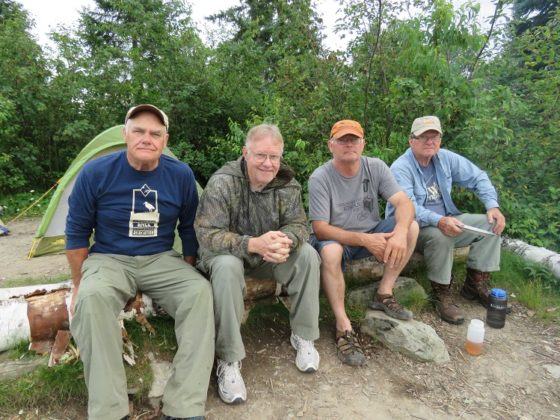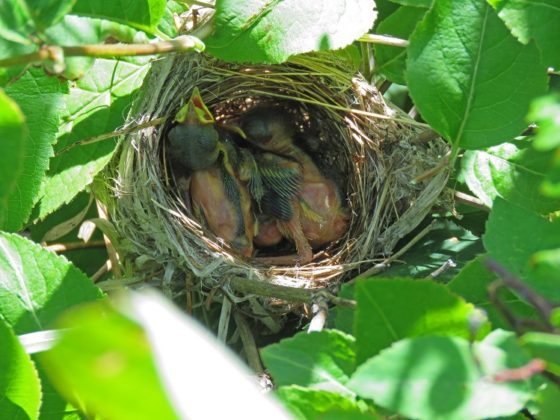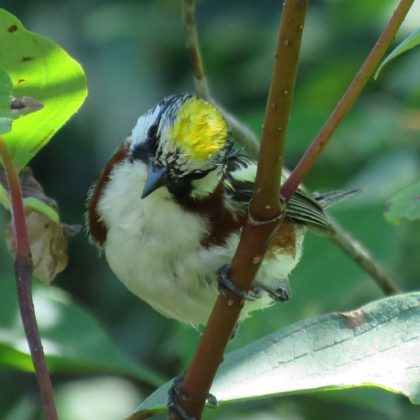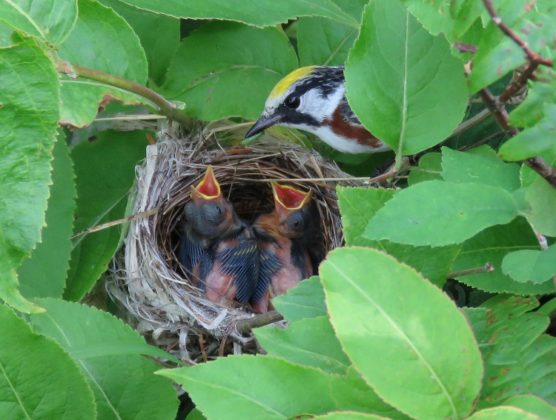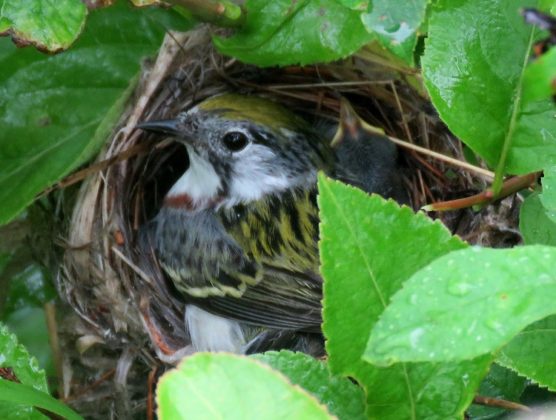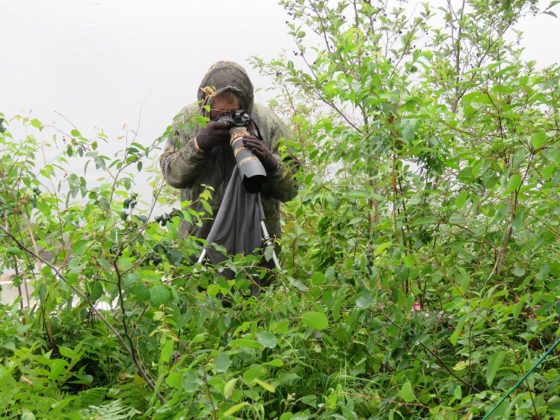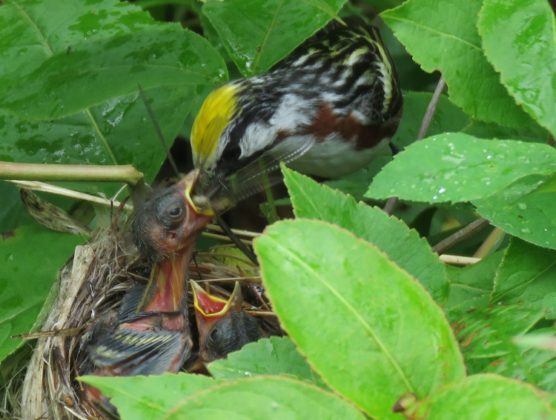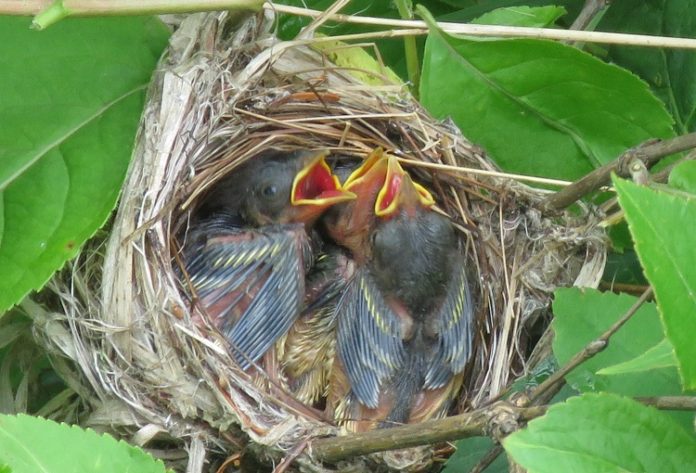
We were a tired group of four guys.
Mike Delaney, Ty Smedes, Forrest Corson and I had paddled several miles to get our campsite on Ensign Lake in the Boundary Waters Canoe Area in northern Minnesota. We set up our tents and dinning fly, stowed our gear and had our lunch.
We were now ready for some resting time in our hammocks.
I was in my hammock under a warm July sun with my eyes closed and was listening to the gentle waves lap on the rocky shore when — Vooom! — a bird flew over me so close I felt the movement of the air from its wings.
I looked up into the low branches of the spruce tree above me and saw a male chestnut-sided warbler with a beak full of green caterpillars.
Ty saw the bird too and said, “They must have a nest close by.”
We rolled out of our hammocks and carefully looked around the area. We soon found the nest with three baby warblers in it. Chestnut-sided warblers do not nest in Iowa, but they pass through Iowa in the spring on their way to their nesting grounds in the north woods of Minnesota and Canada.
Their cup-shaped nest was 1.5 feet off the ground. Fine grass and strips of cedar bark were woven in the fork of a pin cherry shrub near many small dogwoods and ferns, forming a dense mass of vegetation around the nest.
During the five days at the campsite, I would lie in my hammock and watch the parent birds land in the fir tree above my head with a mouth full of worms and insects. The bird would sit on a branch and look around for possible danger.
It would then slowly drop lower and lower, from the tree branches to the shrubs, slowly working its way to the nest. It would feed the young and then quickly fly out, always in a different direction from where it entered the nest.
This had to be exhausting work for them, each parent coming in about every 45 seconds with food for the young. During two rainy days, the female sat on the nest and covered the young with her wings, keeping them dry and warm, while the male continued to bring in food.
It was fascinating to watch. I put on a camouflage bug suit and was able to get some photos of the parents feeding their babies.
The baby birds would hear the parent coming and open their mouths, looking up for the food. On one occasion, a parent had a large insect that looked far too large for the baby to eat, but mom poked it into the wide-open mouth, and in three swallows the baby had ingested it.
We could tell the babies were growing fast on their diet of insects and caterpillars. This high-protein diet allows them to fledge in 12 days. The parents would also eat some of the insects and caterpillars, but I also saw the adults eating some pin cherries that have a much lower food value.
The babies had grown a lot the five days we were at the camp. On the day we left, the baby birds had their eyes open, and their downy feathers were being replaced by large covert feathers forming on their wings.
We estimated the young would fledge about five days after we left the area. We were sorry that we would miss it. Sometimes fledging birds weigh more than the parents because the parents are constantly feeding the young and not themselves.
We caught many fish on the trip but watching a pair of chestnut-sided warblers feeding three babies in a nest about six feet from my hammock was one of the high points of this trip to northern Minnesota.









